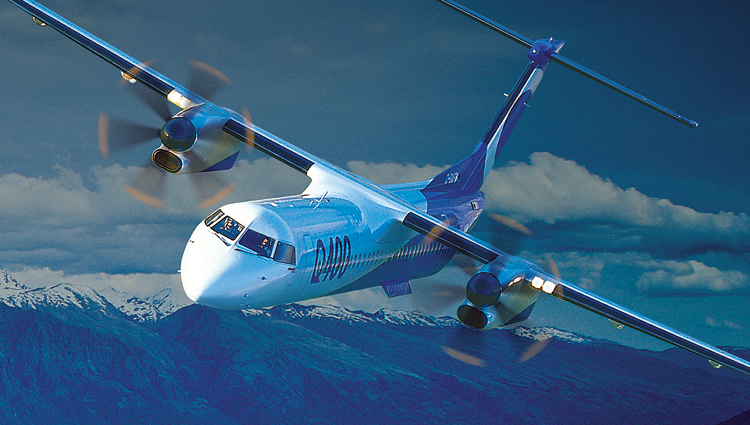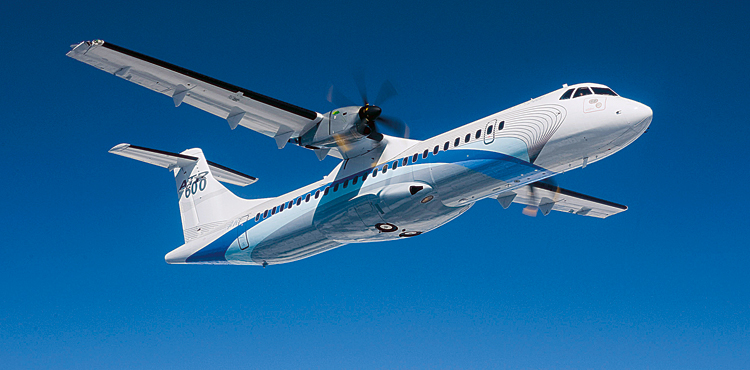INDIAN ARMED FORCES CHIEFS ON OUR RELENTLESS AND FOCUSED PUBLISHING EFFORTS

The insightful articles, inspiring narrations and analytical perspectives presented by the Editorial Team, establish an alluring connect with the reader. My compliments and best wishes to SP Guide Publications.

"Over the past 60 years, the growth of SP Guide Publications has mirrored the rising stature of Indian Navy. Its well-researched and informative magazines on Defence and Aerospace sector have served to shape an educated opinion of our military personnel, policy makers and the public alike. I wish SP's Publication team continued success, fair winds and following seas in all future endeavour!"

Since, its inception in 1964, SP Guide Publications has consistently demonstrated commitment to high-quality journalism in the aerospace and defence sectors, earning a well-deserved reputation as Asia's largest media house in this domain. I wish SP Guide Publications continued success in its pursuit of excellence.
- The layered Air Defence systems that worked superbly, the key element of Operation Sindoor
- Operation Sindoor | Day 2 DGMOs Briefing
- Operation Sindoor: Resolute yet Restrained
- India's Operation Sindoor Sends a Clear Message to Terror and the World – ‘ZERO TOLERANCE’
- Japan and India set forth a defence cooperation consultancy framework, talks on tank and jet engines
Big or Small, Safety is Utmost
Last year some 3.8 billion travellers flew safely on 40.4 million flights. The number of total accidents, fatal accidents and fatalities all declined versus the five-year average, showing that aviation continues to become safer

The International Air Transport Association (IATA) released data for the 2016 safety performance of the commercial airline industry. The all accident rate (measured in accidents per 1 million flights) was 1.61, an improvement from 1.79 in 2015. The 2016 major jet accident rate (measured in hull losses per 1 million flights) was 0.39, which was the equivalent of one major accident for every 2.56 million flights. This was not as good as the rate of 0.32 achieved in 2015 and was also above the five-year rate (2011-2015) of 0.36.
There were 10 fatal accidents with 268 fatalities. This compares with an average of 13.4 fatal accidents and 371 fatalities per year in the previous five-year period (2011-2015). The 2016 jet hull loss rate for IATA member airlines was 0.35 (one accident for every 2.86 million flights). While this outperformed the global hull loss rate, it was a step back from the 0.22 accidents per million flights achieved by IATA members in 2015.
3.8 billion travellers flew safely
“Last year some 3.8 billion travellers flew safely on 40.4 million flights. The number of total accidents, fatal accidents and fatalities all declined versus the five-year average, showing that aviation continues to become safer. We did take a step back on some key parameters from the exceptional performance of 2015; however, flying is still the safest form of long distance travel. And safety remains the top priority of all involved in aviation. The goal is for every flight to depart and arrive without incident. And every accident redoubles our efforts to achieve that,” said Alexandre de Juniac, IATA’s Director General and CEO.

Irrespective of the type of aircraft one is flying, safety is paramount and there is no compromise whatsoever. But there are perceptions in the minds of people that smaller aircraft, particularly turboprop and regional jets, may not be as safe as mainline airlines. This is far from the truth. The aircraft, per se, is fine, it is how the operators, be it mainline airlines, regional or charter, maintain and operate their aircraft.
Misconception on turboprops
One of the most common perceptions, totally misguided, is that aircraft with propellers is less safe than a jet. The perception could be because jets have evolved and produce less noise compared to the turboprops. And also the turboprops look little antiquated.
Technically speaking, turboprops and jets are both built with turbine, or jet, engines. Jets have turbine engines encased with fan blades while turboprops have a propeller on the outside, as against piston engines, which also have propellers, but are much different mechanically. Turbine engines are safer and more reliable than piston engines, which are typically found in smaller aircraft.
As regards the noise, no doubt the turboprops make lot more noise but are relatively safer than jets when landing on smaller runways. According to an expert, It is related to the turboprops capabilities under short runway conditions. One of the things pilots look at when planning a flight is something called ‘balanced field’. When they get up to takeoff speed, if something were to go wrong, how quickly could one make the plane stop? It is here the ‘balanced field’ comes in play and turboprops are able to respond and stop much more quickly because the propellers provide extra drag. Thus, the propellers help the aircraft stop when needed.
THERE ARE PERCEPTIONS IN THE MINDS OF PEOPLE THAT SMALLER AIRCRAFT, PARTICULARLY TURBOPROP AND REGIONAL JETS, MAY NOT BE AS SAFE AS MAINLINE AIRLINES. THIS IS FAR FROM THE TRUTH. THE AIRCRAFT, PER SE, IS FINE, IT IS HOW THE OPERATORS, BE IT MAINLINE AIRLINES, REGIONAL OR CHARTER, MAINTAIN AND OPERATE THEIR AIRCRAFT.
For birds strikes, turboprop engines are actually less likely to be damaged compared to the jet’ engines. Turboprops have a thing called “inertial separator” which allow things that are heavier than air to separate from the inlet airflow to prevent damage that can due to the engines. “It works by forcing the inlet air to ‘spin’ in a vortex before it enters the compressor stage. This ‘spinning’ forces out heavier particles by centripital force and ejects them out before they enter the engine.” So it can actually prevent things from hitting the engines directly. But bird strikes do happen sometimes. For both Jets and Turboprops, if the bird is small, it will just pass through the engine, and nothing will happen. If the bird is big enough, it may damage the engine heavily and pilot need to shut that engine down to prevent further damage.

Regional jets are becoming popular. In the US, half of the flights involve smaller carriers, ferrying nearly one-quarter of the passengers who travel every day. Except that the regional operators, strapped for funds, offer lower pay-scales and also sometimes makes the crew put in long hours (at lower wages) and this could be an operational problem which may or may not have a bearing on safety issues.
Safe to fly regional aircraft
Arnold Barnett, an MIT professor who specializes in statistics on aviation safety states “Historically, the safety record for piston and prop-jet aircraft has not been as good as that for pure jets. US regional jet flights have a splendid safety record. “They have suffered only one fatal crash in the past two decades.” According to Barnett’s analysis, the risk of death on a regional jet flight in the US is 1 in 30 million. Prop-jets — planes with propellers driven by turbo-jet engines — are a different story, Barnett points out that the risk of death on a prop-jet flight is 1 in five million.
In 1997, after a series of commuter crashes, new rules took creating more stringent requirements for regional planes. Smaller carriers now must follow the same rules as the big players. “There is no difference between regional and major airlines when it comes to safety of our passengers and crews, the number-one priority of all airlines,” Roger Cohen, President of the Regional Airline Association has said. “Regional airlines and our 60,000 airline professionals are proud of our performance serving 160 million passengers every year, and especially of our commitment to transport them safely.” “This is all one industry,” Cohen insists. “One level of safety and that’s something the industry is committed to 24-7.”
As the United Nations’ specialized agency responsible for setting international standards for civil aviation, ICAO has been called upon to play a leadership role in developing global strategies for the regulation and oversight of aviation safety and security, both definitively and in the context of facilitating economic regulatory reform. Irrespective of ICAO protocols, the airline industry is committed to ensuring safety in the skies.





